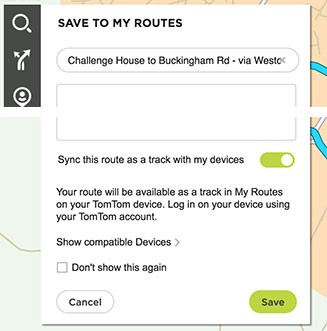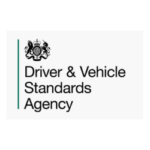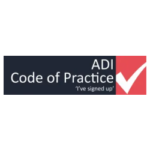GDPR stands for the General Data Protection Regulation.
As of the 25th May 2018, all businesses are expected to comply with the new GDPR law. As a business, self-employed driving instructor, driving instructor franchisee, this will affect you. You should demonstrate a duty of care to your customers/clients/learners in how you handle and store their data and personal information.
For very large companies this is quite a serious matter. For some smaller businesses it is still serious but the likelihood of being hacked online and having your data stolen for all of your clients is considerably lower. However, there are many instances of failing to comply with the new GPDR law. We will cover those relevant to driving instructors below.
Everything such as your learners’ personal information should be kept confidential and stored in a safe place. If you take a learner/client’s information by pen and paper, this should not be kept in your car overnight and should be stored in a safe place at your home or office, in a locked filing cabinet. If you store customer/client/learner information by computer, tablet or mobile phone, then your device should have a password on it. Any applications (apps) you use to store information should also be password protected and you shouldn’t leave your device, whether tablet, phone or computer, unattended in your car at night.
Confidential information to consider: client/learner’s full name, address, phone numbers, driving licence/provisional driving licence, email address, payment methods, bank details should be stored.
Other confidential information to consider is what you post on social media about your clients/learners. Whether it be a screen shot of a testimonial, the client/learner cancelling on you at short notice, pass pictures etc. These all count as information about the client/learner and should not be posted to the public domain without their consent. As a company we had one instance in which the learner was taking their driving lessons in Bedford and passed first time with one of our instructors. The pass picture was posted on Facebook, however the mother complained and wanted the pass picture taken down. Just be mindful and protect yourself as sometimes people change their minds and with nothing in writing it’s hard to prove a verbal agreement.
Discussing or sharing information verbally, by email or by text message. Be mindful when you are sharing a learner/client’s information that they are happy for you to pass on their name/number/email etc. This shouldn’t cause major issues for driving instructors, but you can see why some big companies such as Facebook have come under scrutiny for selling information and data.

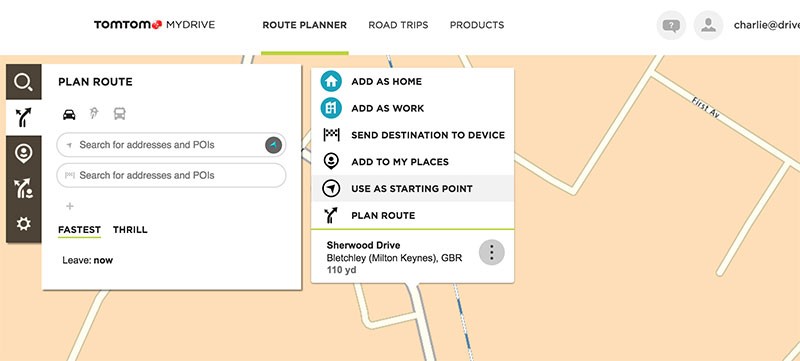
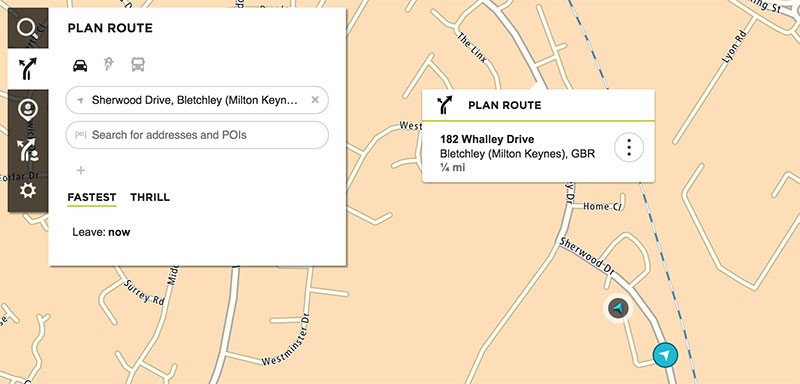 The route will now highlight blue from the starting point to your current position.
The route will now highlight blue from the starting point to your current position.
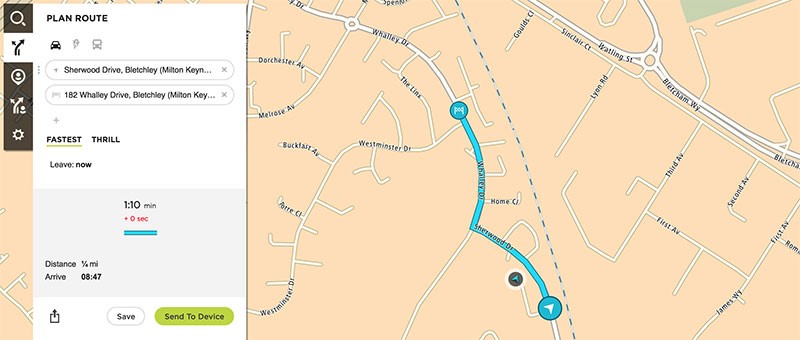 In the box on the left hand side, you will need to change the route type to “Thrill” and disable the “Round Trip” option. This will stop the planner from creating a loop from the start to the end point.
To continue planning your route, just drag the finish line icon around the map.
Sometimes the map will try to be intelligent and jump your line to another road. When this happens, you can right click on your intended road and click “Add Stop”. Don’t over use the stops though as there is a limit per route, so only use it when you need to force the route in a specific direction.
In the box on the left hand side, you will need to change the route type to “Thrill” and disable the “Round Trip” option. This will stop the planner from creating a loop from the start to the end point.
To continue planning your route, just drag the finish line icon around the map.
Sometimes the map will try to be intelligent and jump your line to another road. When this happens, you can right click on your intended road and click “Add Stop”. Don’t over use the stops though as there is a limit per route, so only use it when you need to force the route in a specific direction.
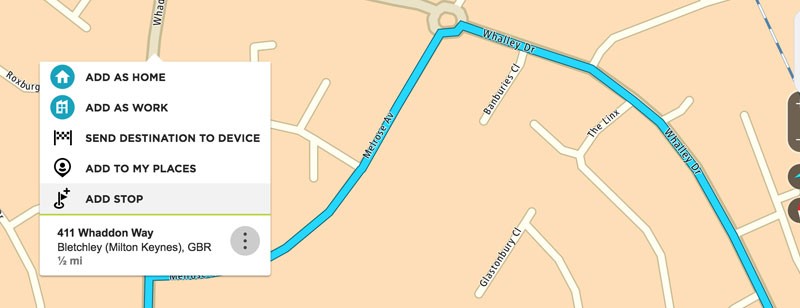 Alternatively you can just set an ending location using the box on the left. This is probably better for longer routes – you can just add stops to the different places you want to travel via.
Alternatively you can just set an ending location using the box on the left. This is probably better for longer routes – you can just add stops to the different places you want to travel via.
